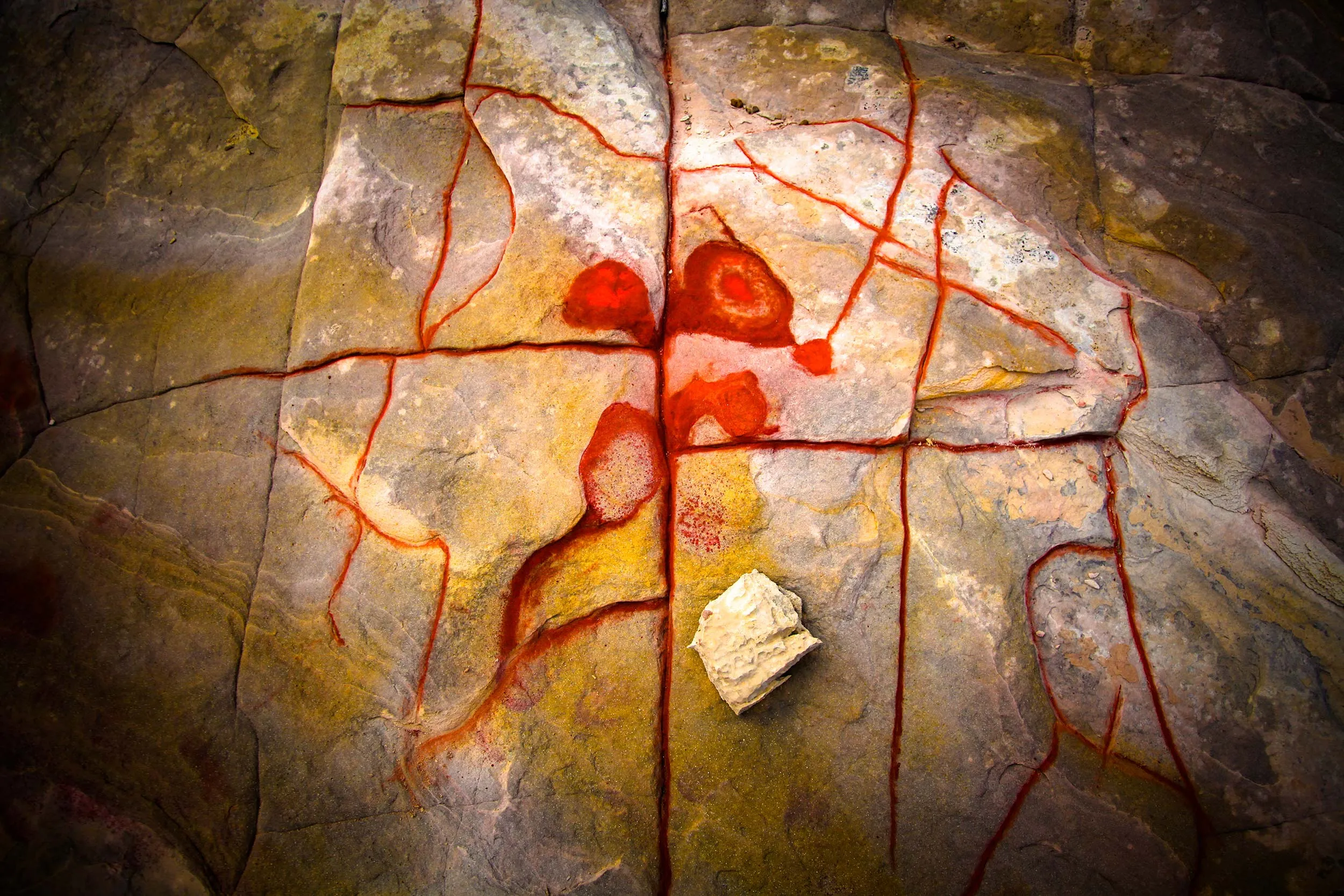In 2015, Jonathan Harris traveled to the remote canyon country of Utah with Larry Clarkson, a connoisseur of pictographs and petroglyphs. During their time together, Harris made a series of drawings on rocks. By responding to naturally occurring shapes, colors, and marks in the rocks, he hoped to express what felt like their “inner potential.”
For three years, Harris sat with the photographs of the drawings he made, planning to make a project called “A(s)sign Language,” where the drawings would be presented wordlessly, and viewers would be invited to submit their own interpretations. By “assigning language” to the silent images, a new kind of “sign language” would be born. Harris imagined creating some kind of voice recording application, or a repository of submitted text, or possibly working with professional academics who study the interpretation of ancient images. But none of these approaches felt right to him. They all felt too clever, and didn’t honor the deep silence of the places where the drawings were made.
Meanwhile, our collective relationship with the Internet has changed. The techno-utopian rhetoric that once prevailed has now given way to talk of addiction, fake news, electioneering, and the vast manipulation and monetization of human attention. The Internet has become a cacophony, and its promise of informational omniscience no longer feels plausible, desirable, relevant, or wise.
Harris has long been fascinated by the use of “oracles” in shaping human thought—including such devices as augury (in ancient Rome), the I Ching (in China), the Tarot (in Europe), and Rorschach tests (in western psychology). It is his understanding that such practices basically function as mirrors—by confusing the rational mind, they unlock the user’s subconscious and allow insights to arise from within.
Harris began to wonder if the images he made in Utah could be a kind of pictographic oracle for the Internet—a Magic 8 Ball with no words, speaking out of the silence, helping people see what they already know.
Harris is happy to present A Silent Place—about as minimal as a website can be.
May it be a refuge and a mirror.
Harris shares insights on his work in an interview with Projected curator Wesley Verhoeve.
How to View A Silent Place
During the day, A Silent Place can be viewed on monitors inside the ICP Museum and during evening hours, images are literally “projected” onto the windows of the ICP Museum; they can be viewed from the sidewalk outside the Museum and are most visible after sunset. Learn more about Projected.
About the Artist
Jonathan Harris (b. August 27, 1979) studied computer science at Princeton University and interactive art at Fabrica.
His multimedia projects combine data visualization, documentary, performance, photography, storytelling, ritual, and other tools and technologies.
His work has been exhibited at Le Centre Pompidou in Paris, the Victoria and Albert Museum in London, the CAFA Museum of Contemporary Art in Beijing, the Museum of Fine Arts, Houston, and the Museum of Modern Art in New York, where two of his projects (We Feel Fine and I Want You To Want Me) are in the permanent collection.
In 2009, the World Economic Forum named him a Young Global Leader, and Time magazine named his project, Cowbird, one of the Fifty Best Websites of 2012. The recipient of five Webby Awards, his TED Talks have been viewed millions of times.
He lives in the small town of Shelburne, Vermont, where he serves on the board of the Shelburne Craft School, directs the nascent Shelburne Institute, and helps to manage High Acres Farm—evolving the place where his family has lived for five generations.


